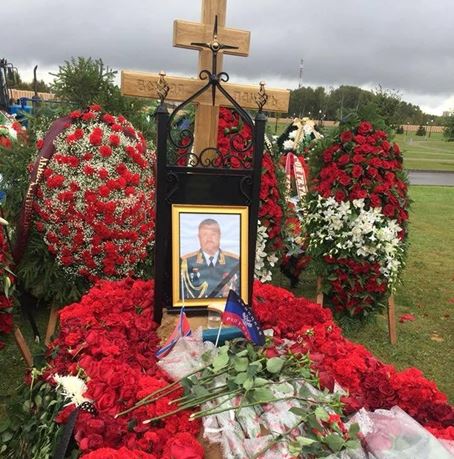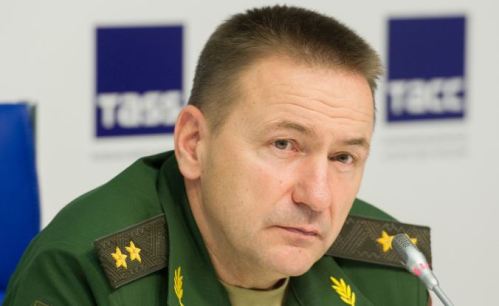
General-Major Andrey Kolotovkin receives the 2nd CAA standard
Seven new Russian combined arms (or tank) army commanders have been appointed since early 2017. Five old ones remain in place.
Eighteen months ago, only three were at post they held 18 months prior to that (i.e. in early 2016).
But two — General-Lieutenants Kuzmenko and Sevryukov — have now served in the same spot for three years or more.
The current rundown of armies, headquarters, MD/OSK, and commanders looks like this:
1st TA…Bakovka…Western…General-Major Sergey Kisel.
6th CAA…Agalatovo…Western…General-Lieutenant Andrey Kuzmenko.
20th CAA…Voronezh…Western…General-Major Andrey Ivanayev.
8th CAA…Novocherkassk…Southern…General-Lieutenant Sergey Kuzovlev.
49th CAA…Stavropol…Southern…General-Lieutenant Sergey Sevryukov.
58th CAA…Vladikavkaz…Southern…General-Lieutenant Yevgeniy Nikiforov.
2nd CAA…Samara…Central…General-Major Andrey Kolotovkin.
41st CAA…Novosibirsk…Central…General-Major Yakov Rezantsev.
36th CAA…Ulan Ude…Eastern…General-Major Mikhail Nosulev.
29th CAA…Chita…Eastern…General-Major Roman Berdnikov.
35th CAA…Belogorsk…Eastern…General-Major Sergey Chebotarev.
5th CAA…Ussuriysk…Eastern…General-Major Oleg Tsekov.
Kisel replaced General-Lieutenant Avdeyev who went to head the Combined Arms Academy. Ivanayev took the place of General-Major Peryazev who moved to the MOD’s Main Combat Training Directorate.
There’s been considerable churn in the 2nd CAA. In early 2017, General-Major Zhidko was its commander. In less than two years, he served as chief of staff, first deputy commander for the Russian group of forces in Syria, deputy chief of the General Staff, and Commander of the Eastern MD.
General-Major Rustam Muradov replaced the meteoric Zhidko before being replaced himself by General-Major Kolotovkin. Muradov is now a deputy commander of the Southern MD.
General-Lieutenant Zavizon was relieved by Rezantsev. Zavizon is probably in Syria, or, less likely but possibly, even eastern Ukraine.
Followed by Nosulev, General-Major Kovalenko went to the unusual post of deputy commander of the Pacific Fleet for ground and coastal troops.
General-Major Poplavskiy became a deputy commander of the Central MD when Berdnikov replaced him.
Tsekov took over the 5th CAA after General-Lieutenant Asapov died in a mortar attack in Syria in 2017.

General-Lieutenant Asapov’s grave
An observer has noted a flag from the so-called Donetsk People’s Republic on Asapov’s grave. According to some, he commanded the DNR’s “1st Army Corps” at one point. He reportedly also saw combat in Chechnya and Abkhazia as well.



